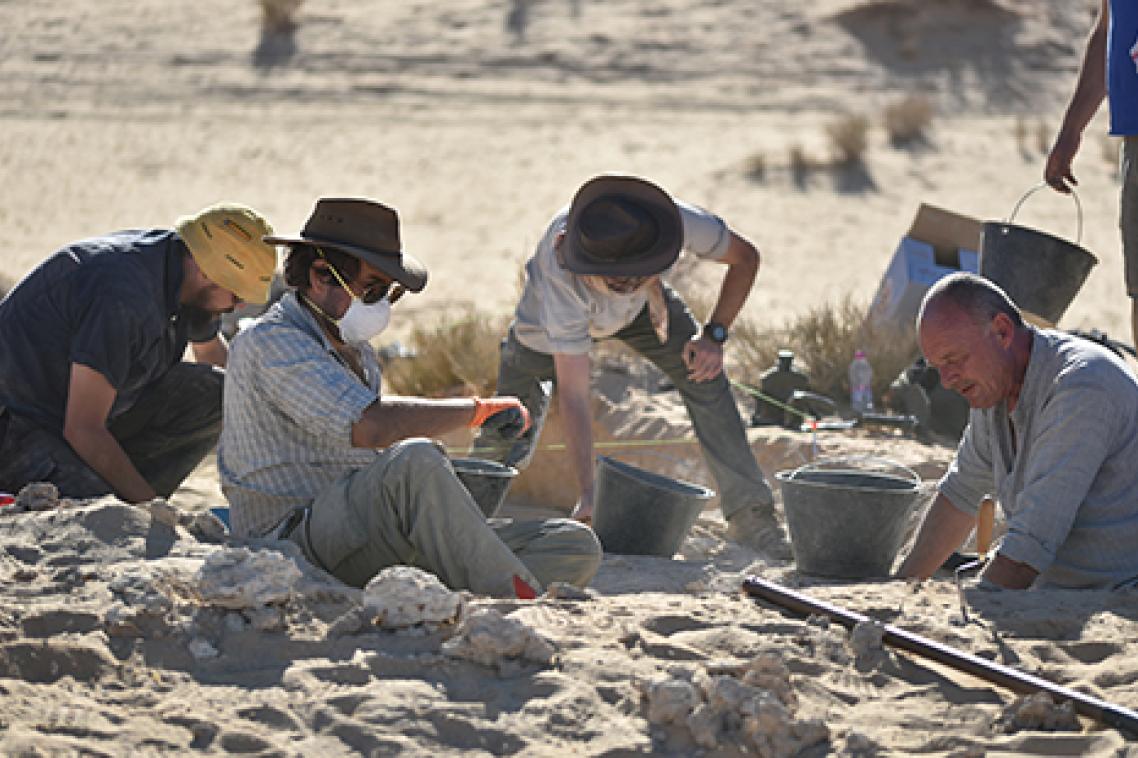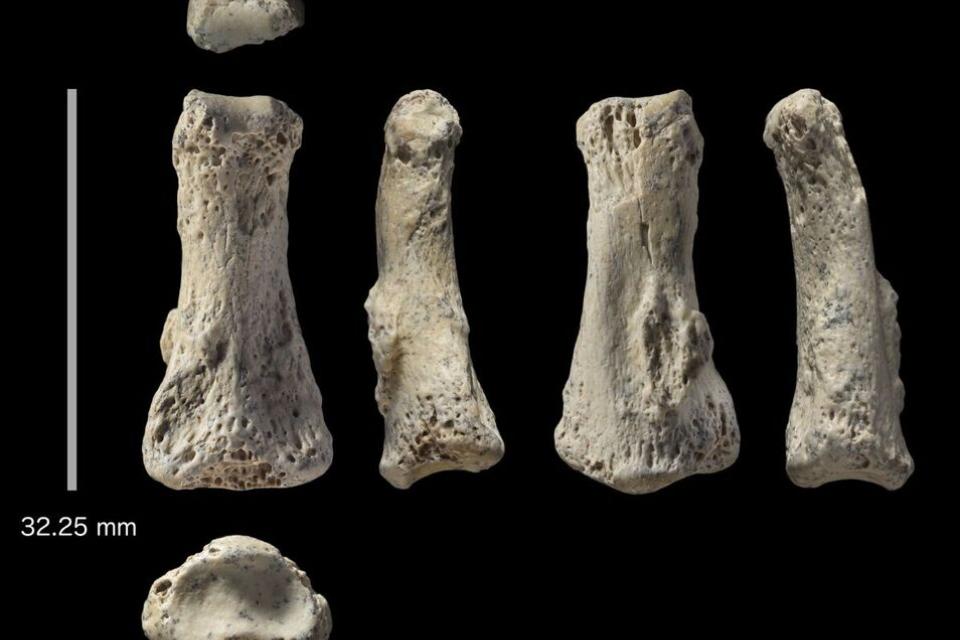Fossil finger points to new understanding of earliest human migration

The discovery of an 88,000-year-old fossilised human finger in Saudi Arabia is rewriting the history of the first human migration out of Africa.
University of Queensland Palaeontologist Dr Gilbert Price said the finger was the oldest Homo sapiens fossil ever found in Saudi Arabia, and dated back to a time when the region was much wetter than it is today.
“The discovery is the oldest directly dated Homo sapiens fossil outside of Africa and the Levant, and indicates that early dispersals into Eurasia were more expansive than previously thought,” he said.
Dr Price is part of an international research project, headed by Germany’s Max Planck Institute for the Science of Human History, that discovered the fossilised finger bone at Al Wusta, an ancient fresh-water lake in what is now the Nefud Desert.
“These ancient humans lived alongside animals that seem more at home around the modern wetlands of Equatorial Africa, such as hippos, water buffalo, and antelopes,” he said.
“There was certainly no shortage of food and water for these ancient people – a stark contrast to the vast, dry and empty desert of today.”
The finding shows there were multiple dispersals out of Africa, and they had spread further than previously known.

“A massive swing towards arid climates drove major extinctions of the wetland animals, as well as many of the grassland species, forever changing the landscape and environments for humans in the Arabian Peninsula.”
The 3.2cm fossilised finger bone is the first ancient human fossil found in Arabia. It has been uranium series-dated at 88,000 years.
Dr Price is with UQ’s School of Earth and Environmental Sciences.
The research, in partnership with the Saudi Commission for Tourism and National Heritage, involved the Saudi Geological Survey, King Saud University, the University of Oxford and other key United Kingdom and Australian institutions including Brisbane's Griffith University.
It is published in Nature Ecology and Evolution (doi: 10.1038/s41559-018-0518-2)
Media: Dr Gilbert Price, g.price1@uq.edu.au, @TheFatWombat, +61 439 876 005.
Related articles

UQ researchers tracking ammonia emissions in wastewater treatment

Queensland landlords could soon face jail for ignoring illegal tobacco. What are other states doing?
Media contact
UQ Communications
communications@uq.edu.au
+61 429 056 139
